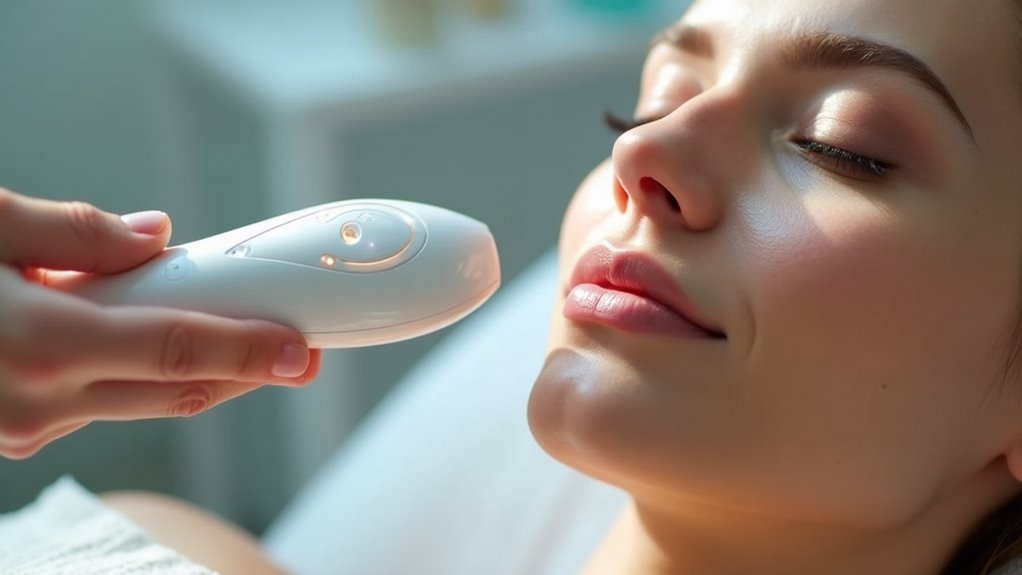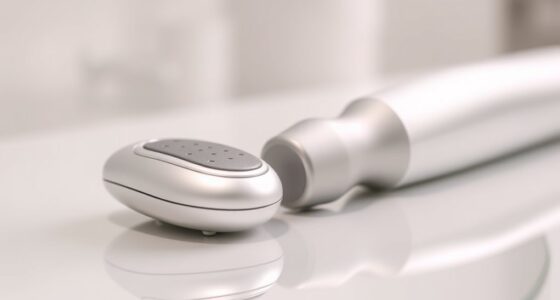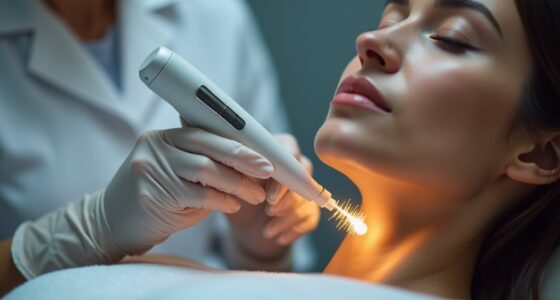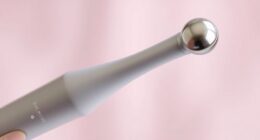Microcurrent treatments are generally safe for people with fillers when you follow the right timing and precautions. Experts recommend waiting at least two weeks after filler injections before getting microcurrent, to prevent any migration or disruption. Make sure to consult with a qualified dermatologist beforehand to assess your specific situation. If you want to learn more about how to safely combine these treatments and get the best results, keep exploring the details below.
Key Takeaways
- Microcurrent is generally safe when performed at least two weeks after filler injections.
- Experts recommend consulting a dermatologist before combining treatments to minimize risks.
- Microcurrent stimulates facial muscles and collagen without directly affecting filler placement.
- Immediate microcurrent after fillers may increase swelling or cause filler migration.
- Proper timing and professional guidance help ensure safe, effective skin rejuvenation with fillers and microcurrent.
How Microcurrent Works and Its Effects on the Skin

Microcurrent therapy works by delivering very low-level electrical currents to your skin, stimulating your facial muscles and boosting cellular activity. This process, known as muscle stimulation, helps tighten and tone your facial muscles, giving your skin a lifted appearance. At the same time, it encourages skin rejuvenation by increasing blood flow and promoting collagen production. These combined effects help reduce fine lines, improve skin elasticity, and create a more youthful glow. The therapy is gentle and non-invasive, making it suitable for most skin types. As your muscles respond to the microcurrent, your skin becomes firmer and more resilient over time. Additionally, microcurrent treatments are often described as a natural skin rejuvenation method that enhances your overall appearance without invasive procedures. Overall, microcurrent offers a natural boost to your skin’s energy, supporting a smoother, more rejuvenated complexion.
Common Concerns About Combining Microcurrent With Fillers

When considering the combination of microcurrent treatments with dermal fillers, many people wonder about potential interactions and safety concerns. You might worry about Botox interactions or filler migration, which could affect results or cause complications. It’s natural to be cautious about how these treatments interact.
Concerns include:
- Microcurrent potentially disrupting filler placement or causing migration
- Interactions that could diminish the effectiveness of Botox or fillers
- Risks of overstimulation leading to uneven results or swelling
While current evidence suggests microcurrent is generally safe with fillers, it is crucial to consult with a qualified professional to minimize risks. Understanding these concerns helps you make informed decisions about combining treatments safely and effectively. Environmental considerations can also play a role in overall skin health and treatment outcomes.
Expert Opinions on Safety and Timing for Treatments

Experts agree that proper timing is essential to guarantee both safety and ideal results when combining microcurrent treatments with fillers. If you get treatments too close, you risk filler migration or microcurrent contraindications that can compromise your results. Most derms recommend waiting at least two weeks after filler injections before scheduling microcurrent sessions. This pause allows fillers to settle and reduces the risk of unintended movement or damage.
| Timing Tips | Important Considerations |
|---|---|
| Wait 2 weeks post-filler | Avoid microcurrent immediately after injections |
| Consult your specialist | Assess filler placement to prevent migration |
| Follow personalized advice | Ensure safe, effective treatment outcomes |
Recommendations for Those Considering Microcurrent Post-Filler
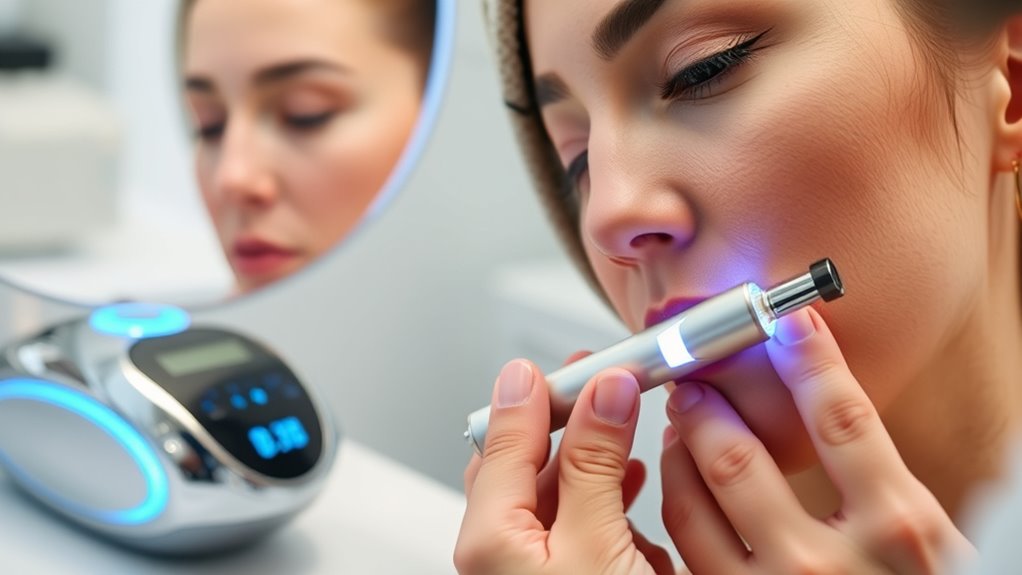
If you’re considering microcurrent treatments after getting fillers, it’s important to plan carefully to guarantee safety and ideal results. Timing is vital—wait at least two weeks post-filler to reduce risks of Botox interactions and minimize disruption of the filler’s placement. Be mindful of scar tissue considerations; microcurrent may influence healing or cause uneven results if scars are present near treated areas. Consulting your dermatologist ensures personalized guidance. Additionally, understanding the effects of microcurrent on skin healing processes can help you make informed decisions about treatment timing and safety.
Tips for Ensuring Safe and Effective Skincare Practices
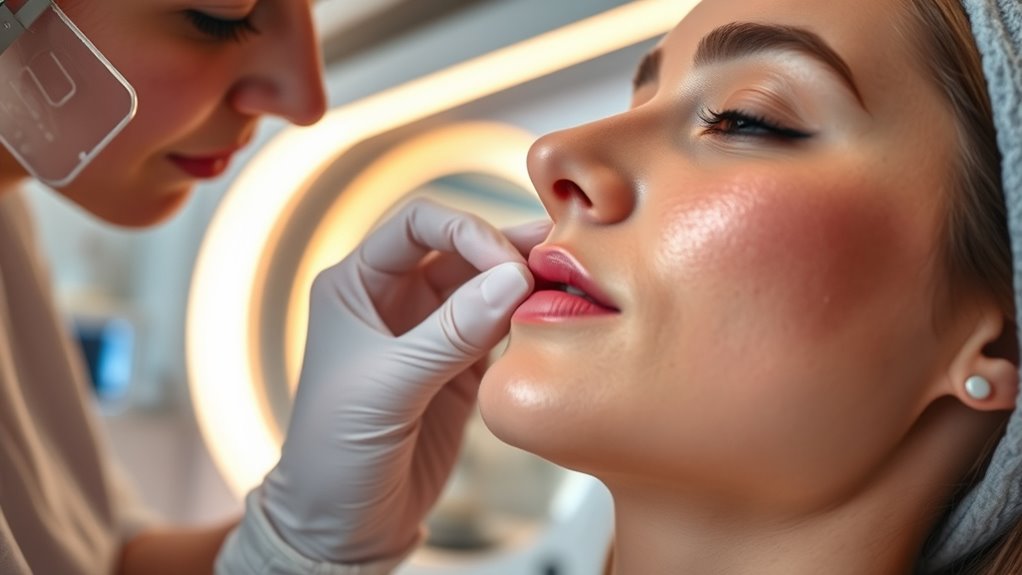
Practicing safe and effective skincare starts with understanding your skin type and choosing products suitable for it. When exploring non-invasive procedures like microcurrent treatments or skin rejuvenation options, it’s essential to consult with professionals to ensure compatibility with fillers. Always inform your provider about any recent procedures or treatments to prevent adverse reactions. Follow proper skincare routines, including gentle cleansing and moisturizing, to maintain skin health. Avoid aggressive scrubbing or harsh products that could irritate delicate areas. Prioritize professional guidance when considering new treatments, and always adhere to recommended intervals between procedures. Staying informed and cautious helps maximize benefits while minimizing risks, guaranteeing your skincare journey supports your skin’s safety and natural beauty.
Frequently Asked Questions
Can Microcurrent Treatments Cause Fillers to Shift or Migrate?
You might wonder if microcurrent treatments can cause filler migration or affect fillers’ position. Generally, microcurrent effects are gentle and target muscles without disrupting filler placement. However, aggressive treatments could potentially cause filler migration, especially if done improperly. To stay safe, always consult a qualified practitioner familiar with your fillers. They can tailor the procedure to minimize the risk of filler migration and ensure you get benefits without unwanted movement of your fillers.
Are There Specific Microcurrent Devices Recommended for Post-Filler Skin?
Think of your skin as a delicate garden—you want the right tools to nurture it. When choosing a microcurrent device post-filler, focus on device compatibility and guarantee your practitioner has proper qualifications. Not all microcurrent devices are suited for skin with fillers, so consult a professional who understands how to select safe, effective equipment tailored to your needs. This way, you protect your investment and achieve ideal, natural-looking results.
How Long Should I Wait After Filler Injections Before Undergoing Microcurrent?
You should wait at least two weeks after filler injections before getting microcurrent treatments. This timing consideration helps guarantee filler stability and reduces the risk of shifting or swelling. If you’ve had recent fillers, consult your dermatologist for personalized advice. Allowing adequate healing time promotes better results and minimizes complications, so don’t rush into microcurrent sessions too soon after your filler procedures.
Are There Any Skin Conditions That Contraindicate Microcurrent With Fillers?
You should be cautious if you have skin sensitivities or autoimmune conditions, as these can sometimes worsen with microcurrent treatments. While many can safely receive microcurrent, existing skin issues may increase the risk of irritation or adverse reactions. Always consult with your dermatologist first, especially if you have concerns about how microcurrent might interact with your skin or underlying conditions. Your provider can help determine if it’s suitable for you.
What Signs Indicate Microcurrent May Be Causing Adverse Effects With Fillers?
When it comes to microcurrent and fillers, you need to watch for signs that things aren’t going smoothly. If you notice filler dissolution, uneven swelling, or increased nerve sensitivity, these are red flags. You might also experience persistent discomfort or unusual firmness in treated areas. These symptoms suggest microcurrent could be causing adverse effects, and it’s best to stop treatments and consult your dermatologist to prevent further complications.
Conclusion
Thinking about trying microcurrent after fillers? It’s tempting to jump right in, but the timing and safety aren’t as straightforward as you might hope. While some experts suggest it can be safe with proper precautions, others warn of potential risks. So, before you schedule that next session, stay informed and consult your dermatologist. The real secret to safe, effective skincare might just depend on what you do next—are you ready to make the right choice?
